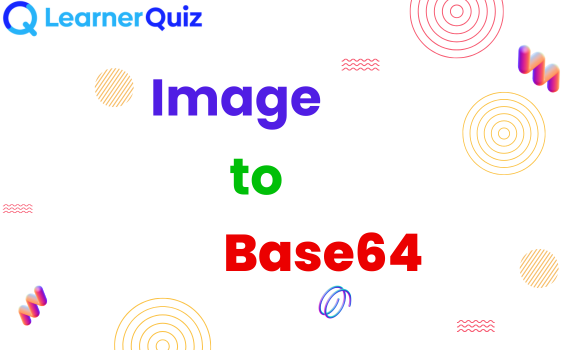

Select image to convert
(Size Limit: 2MB per file | Supported Formats: JPEG & PNG)
Graphic images play a central role in beautifying the website and application and also enhancing their function. However, integrating images through a reference from an external source may make them take a lot of time to load on web pages. There are several problems with images that can be solved with its calculations with the help of Base64: Our Image to Base64 Converter tool lets you convert images into Base64 strings that are easy to be paste into HTML or CSS. The this can improve the page loading time and also the way that images are managed on your website will be eased.

Image to Base64 is the act of converting image-type files to Base64 strings. A Base64 string refers to a long line of text comprising the actual image information that the website can understand. This method is used extensively to include images immediately in the HTML, CSS, JSON, or any file of this format. When it comes to Base64, images do not have to be transferred to a server or from an external source, which makes for faster loading times.
Base64 encoding is the method of converting the binary information of an image to plain text. This text can then be copied and pasted directly into HTML or CSS without having to call an image from another file. Here’s a basic explanation of the steps:
Convert Image Data to Binary: The image file is divided into binary values (which consist of numbers 0 and 1)
Change Binary to Text Format: Then the binaries are transformed to readable text character format such as Base64.
Embed in HTML or CSS: The Base64 string can now be used in HTML or CSS code exactly to display the image.
Our converter means that you can easily convert your images to an encoding format, which can be easily embedded unto your articles. Here are the main benefits:
Faster Loading Times: Embedding Base64 images directly into HTML can speed up load times, as there’s no need to make extra server requests.
Easy Embedding for Emails: Emails often block external images for security reasons. Embedding images as Base64 helps ensure images display properly in emails.
Reduced Server Requests: Fewer image requests mean less server traffic, which is helpful for busy websites.
Better Privacy Control: Since the image is embedded in the code, users don’t need to connect to external servers to load images.
Using our converter is easy and straightforward. Just follow these steps:
Upload Your Image: Start by selecting or dragging your image file into the converter tool.
Convert to Base64: Once the image is uploaded, click on the “Convert” button to start encoding
Embed into HTML or CSS: Paste the Base64 code directly into your HTML <img> tag or CSS background property.
Converting images to Base64 makes embedding images fast, easy, and efficient. With our Image to Base64 Converter, you can turn your images into quick-loading assets that look great on websites, apps, and emails. Give it a try to see how it can make your web experience faster and more effective.